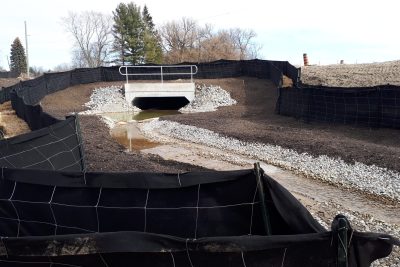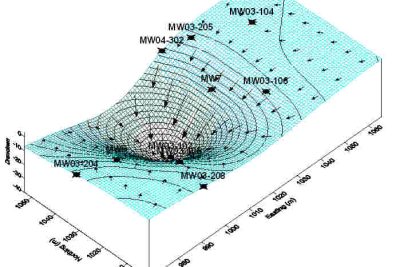Groundwater Management and Permitting
Terrapex employs a team of hydrogeologists to help clients navigate the complex processes involved with groundwater management and permitting.
In the case of construction works, groundwater seepage to excavations might be a minor inconvenience or could produce major inflows requiring significant design changes. We can estimate rates of groundwater seepage, stormwater and foundation drainage. Even for watertight basements, understanding of seepage will assist in the planning of construction. Dewatering studies are our most common assignment.
In the case of groundwater extraction, the quantity of groundwater to be extracted determines the permitting requirements of government. In Ontario large water takings require a permit to take water (PTTW) while lesser construction dewatering may only require registration with the environmental activities and sector registry (EASR).
Terrapex routinely calculates construction dewatering rates and post-construction groundwater seepage rates for permitting and groundwater management needs. We prepare the accompanying reports required for PTTWs and EASRs, and can carry out the application process on behalf of our clients.
Most municipalities require discharge permits or agreements to discharge to their sewage works, regardless of the water volume. Groundwater quality needs to be assessed to determine the appropriate treatment and receiving sewer for groundwater discharge. Terrapex can assist with the sewer permitting process, or undertake the permitting on behalf of our clients.
Our experts will navigate you through these complicated processes with a practical approach and help you avoid costly project delays due to permitting issues.
Terrapex offers the following services related to groundwater management and permitting:
- Calculation of potential dewatering rates
- Applications for permits to take water (PTTWs) and EASR dewatering approvals
- Selection of groundwater discharge locations
- Permitting of groundwater discharges
- Forecasts and risk evaluations



